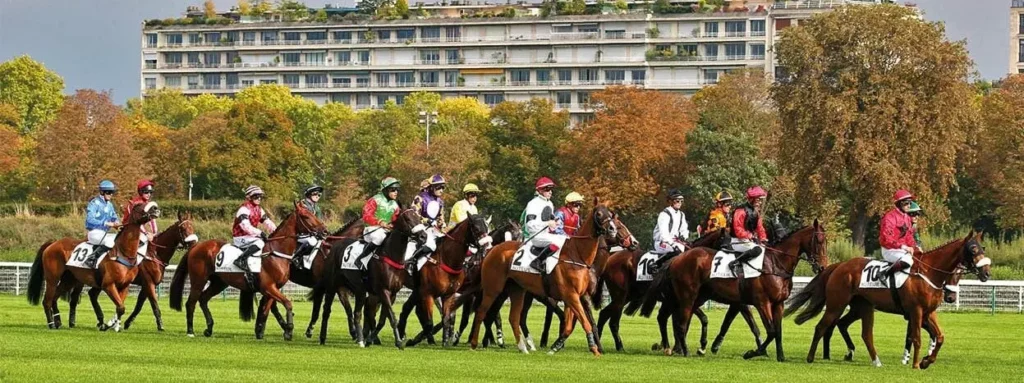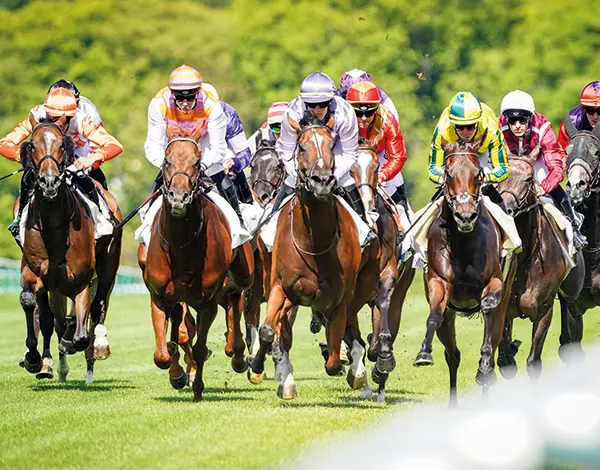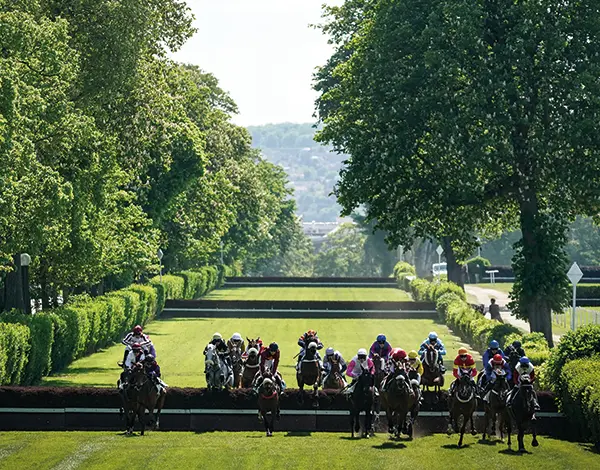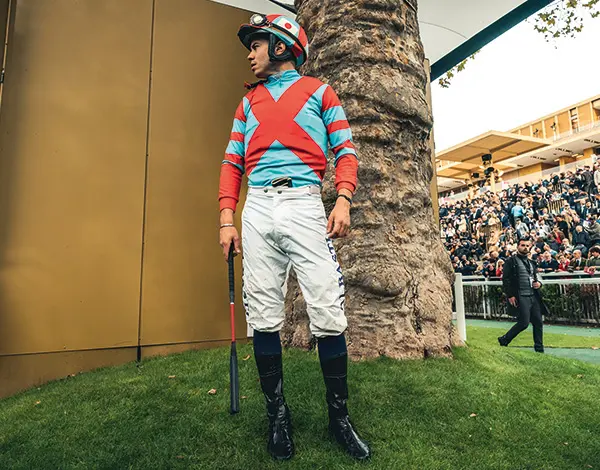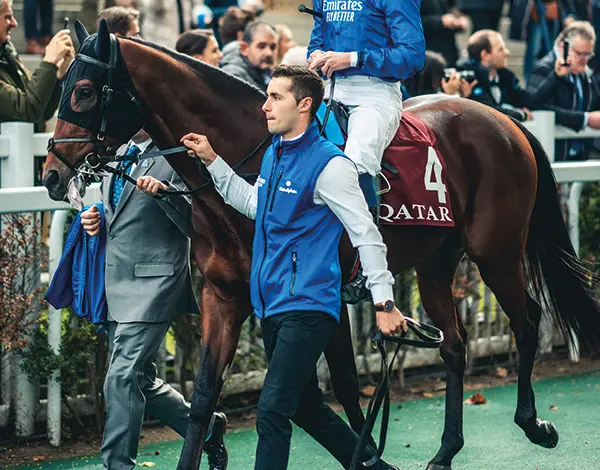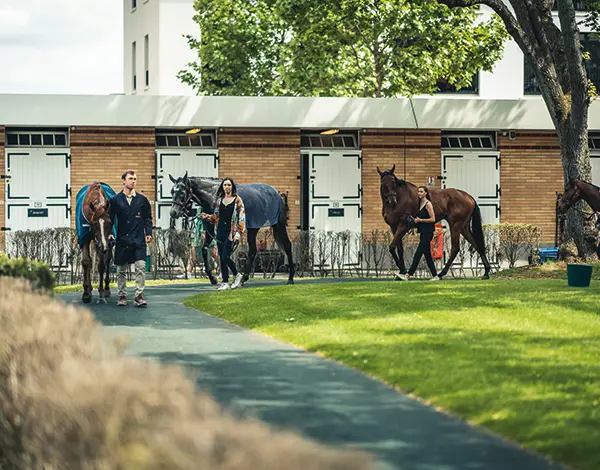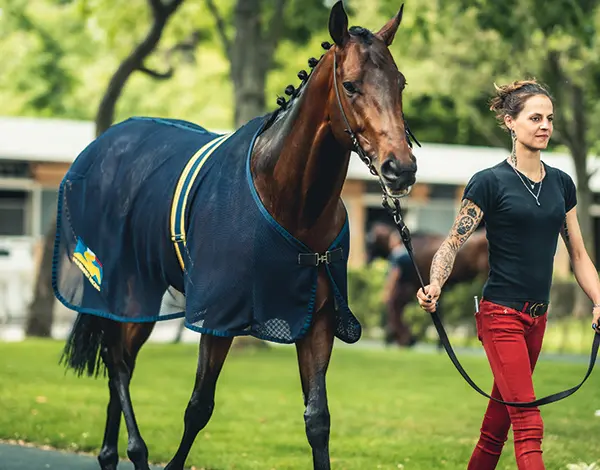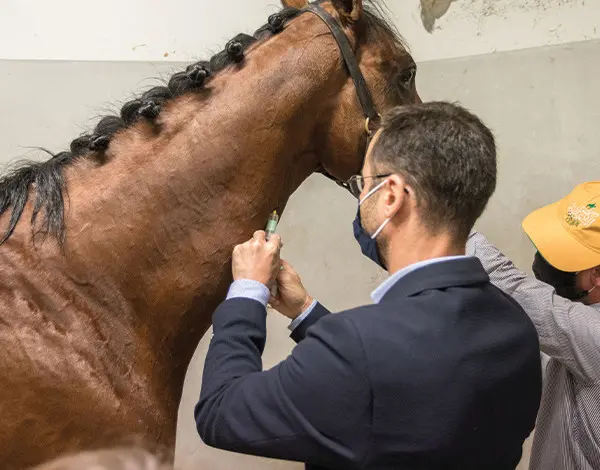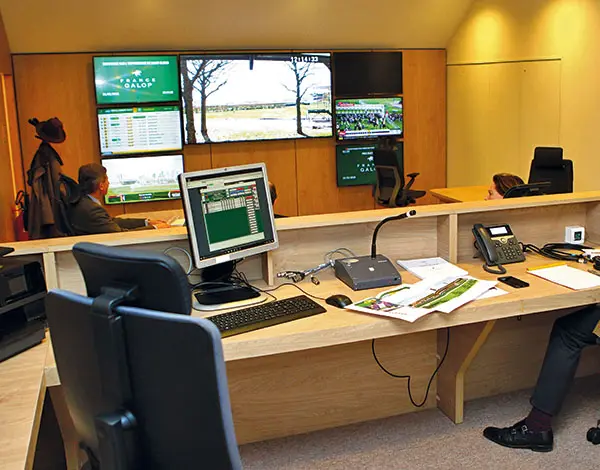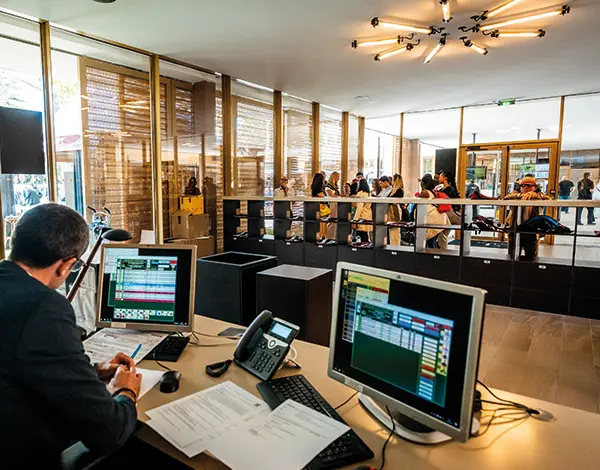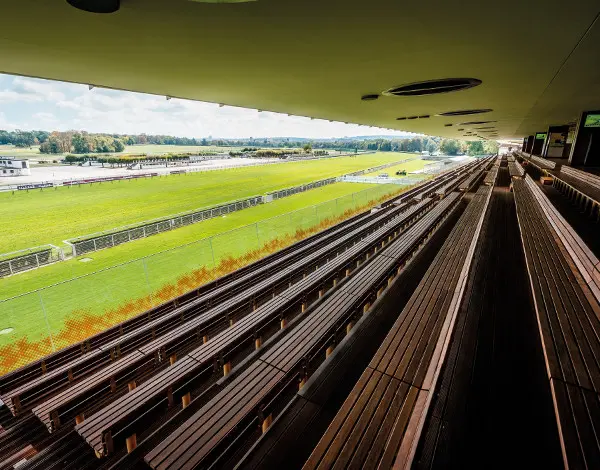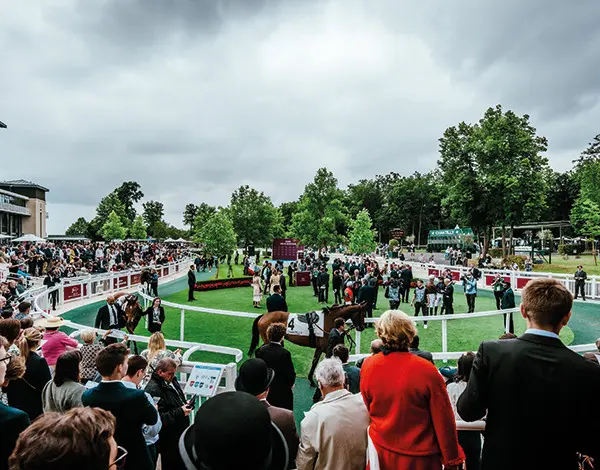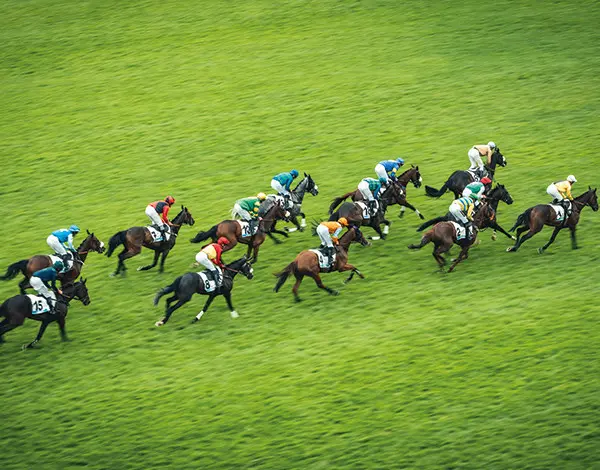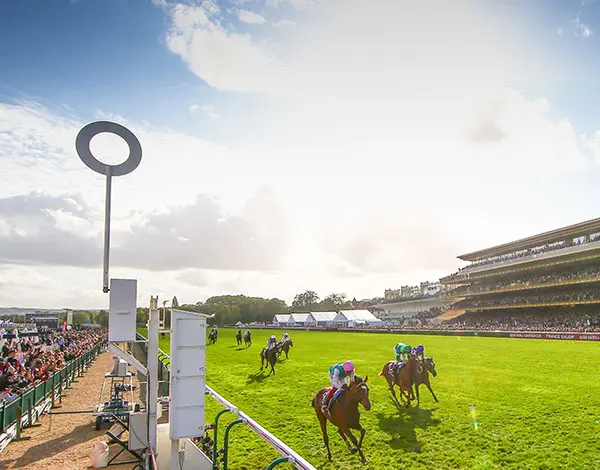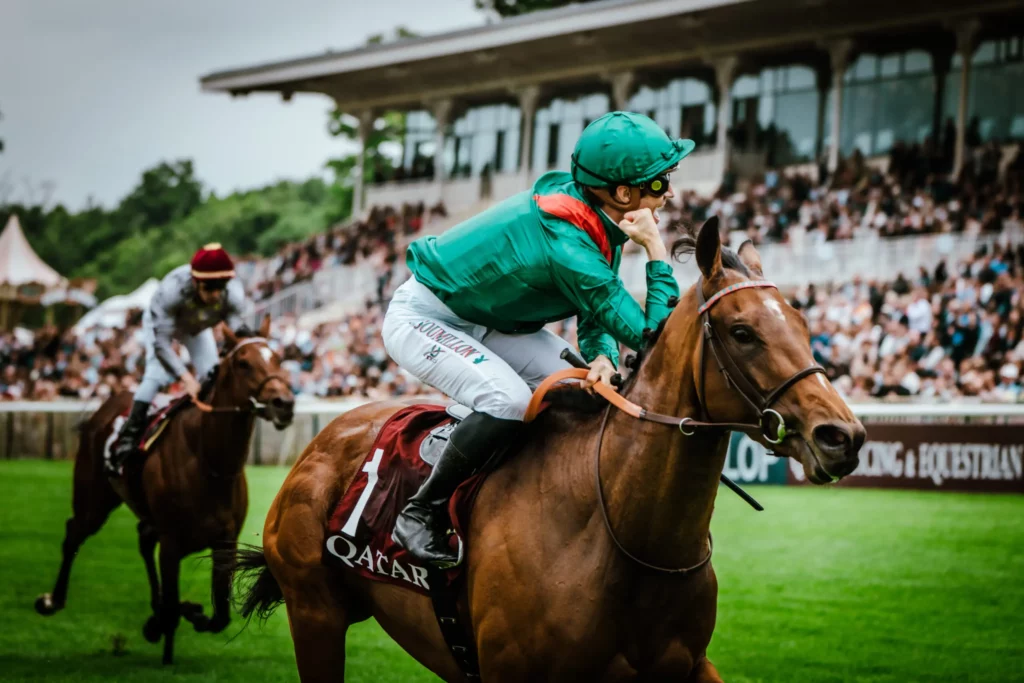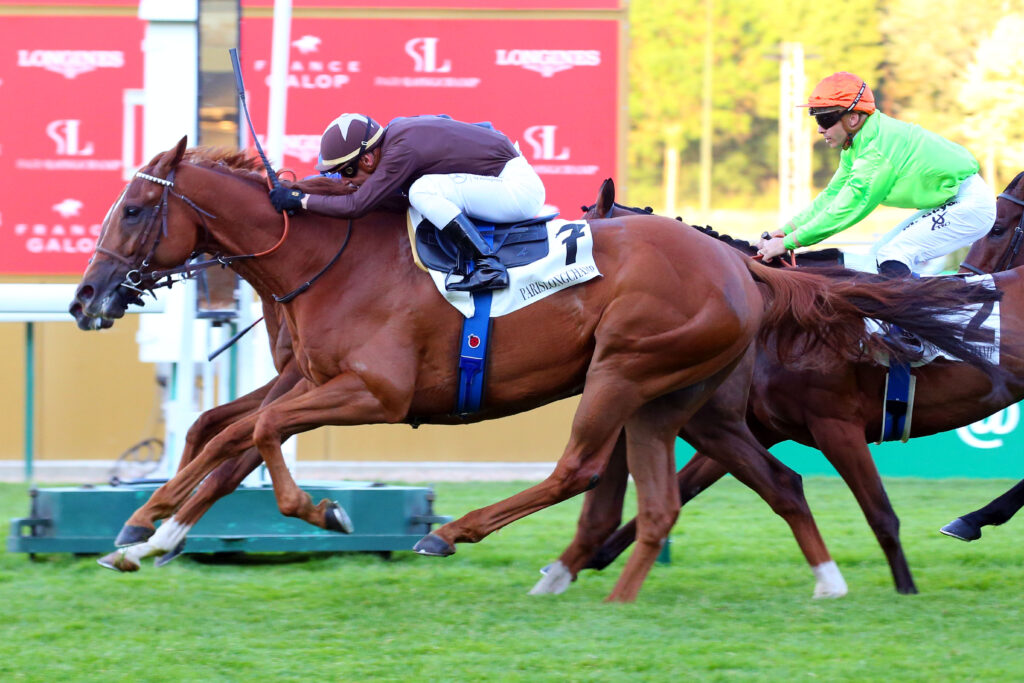High-end racing
Flat racing sees horses race at their fastest, achieving average speeds of between 65 and 70km/h. Horses usually carry a weight of between 51 and 65kg, jockey and saddle combined.
The classic flat distance is a mile and a half and the top jockeys ride more than 1,000 races a year.
In flat races, horses are positioning in starting stalls that are numbered from the rail to the outside of the track. Once all the horses are in the stalls, they open and the race begins. Flat races are run over distances of between five furlongs and two miles and six furlongs.
A draw is held to determine their starting positions in the stalls. Number 1 is the most coveted position as it is railside and offers the shortest distance to travel.
France Galop flat racecourses: ParisLongchamp, Saint-Cloud, Chantilly, Deauville.
